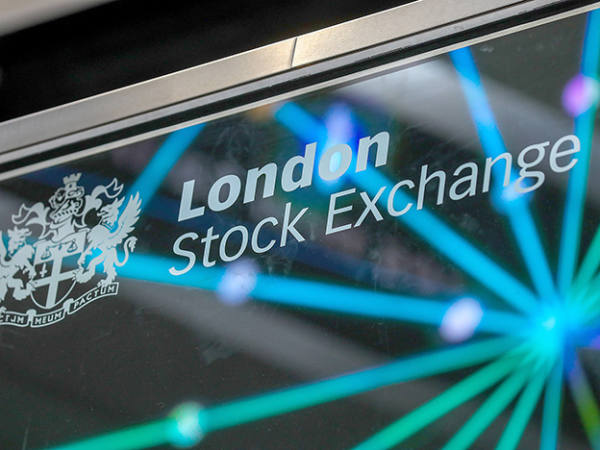- If you do not use all of your annual Isa allowance for investments it is worth using it for cash
- If you are unsure of what to invest in put cash into your Isa and transfer it to investments when you have decided
- Inflation erodes the value of cash over the long term
The cuts to the dividend and capital gains allowances from 6 April mean that you should prioritise using your individual savings account (Isa) to shelter higher-returning investments such as funds and direct shareholdings. However, there are some instances when you should also consider holding cash in Isas.
Everyone should have an emergency fund worth at least six months of their annual expenditure in easily accessible cash. And if you expect to have a large expense within the next five years, for example, a deposit to buy a home, renovations on your existing home or a new car, due to the short time scale you should hold this in cash. If you are not using your Isa for investments, you could hold this cash within one.
If your cash savings exceed what you need for your emergency fund and short-term expenses, you could transfer them into an investment Isa at a future date, and these investments would be sheltered from tax. But if you do not take up your Isa allowance each year you lose it.
Although interest rates on regular savings accounts tend to be better than those for the equivalent types of Isa, the difference is not great. For example, as of 20 March, the best interest rate available on an easy-access cash Isa was 3.2 per cent and the best rate of interest available on an easy-access cash account was 3.4 per cent, according to Moneyfactscompare.co.uk.
| Easy-access Isas with the best interest rates | |||
|---|---|---|---|
| Product | Annual equivalent rate (AER) (%) | Min Opening Amount (£) | Withdrawls |
| Cynergy Bank Online ISA (Issue 33) | 3.2 | 1 | No Restrictions |
| Shawbrook Easy Access Cash ISA Issue 23 | 3.17 | 1,000 | No Restrictions |
| Paragon Triple Access Cash ISA - Issue 12 | 3.1 | 1 | Lower interest rate if more than 3 withdrawals in 12-month period |
| Coventry Building Society HL Active Savings - Limited Access ISA (2) | 3 | 1 | 6 penalty-free withdrawals a year, further withdrawals subject to 50 days loss of interest |
| Teachers Building Society Triple Access Cash ISA for Everyone (Issue 1) | 3 | 100 | Lower interest rate if more than 3 withdrawals a year. |
| Charter Savings Bank Easy Access Cash ISA - Issue 33 | 2.95 | 5000 | No Restrictions |
| Leeds Building Society Limited Issue Online Access ISA (Issue 56) | 2.85 | 1,000 | No Restrictions |
| Ford Money Flexible Cash ISA | 2.8 | 1 | No Restrictions |
| Marcus by Goldman Sachs Cash ISA | 2.8* | 1 | No Restrictions |
| Source: Moneyfactscompare.co.uk as at 20.03.23. *Rate includes 0.25% bonus for 12 months | |||
| 1-year fixed-rate Isas with the best interest rates | |||
|---|---|---|---|
| Product | AER (%) | Minimum Opening Amount (£) | Early withdrawl penalty |
| Charter Savings Bank 1 Year Fixed Rate Cash ISA | 4.1 | 5000 | 90 day loss of interest. |
| Gatehouse Bank 1 Year Fixed Term Woodland Cash ISA | 4.1* | 1000 | 90 day reduction in profit. |
| UBL UK 1 Year Fixed Rate Cash ISA | 4.01 | 2,000 | 90 day loss of interest and account closure. |
| Shawbrook 1 Year Fixed Rate Cash ISA Bond Issue 69 | 3.98 | 1,000 | 90 day loss of interest. |
| Castle Trust Bank 1 year Fixed Rate e-Cash ISA | 3.96 | 1,000 | 90 day loss of interest and account closure. |
| Leeds Building Society 1 Year Fixed Rate Cash ISA (Issue 181) | 3.9 | 100 | 60 day loss of interest |
| Yorkshire Building Society Fixed Rate Cash e-ISA until 30 April 2024 | 3.8 | 100 | 60 day loss of interest and account closure. |
| Aldermore 1 Year Fixed Rate Cash ISA | 3.7 | 1000 | 90 day loss of interest. |
| Paragon 1 Year Fixed Rate Cash ISA | 3.6 | 500 | 90 day loss of interest. |
| Close Brothers Savings 1 Year Fixed Rate Cash ISA | 3.95 | 10,000 | 90 day loss of interest and account closure. |
| Source: Moneyfactscompare.co.uk as at 20.03.23. *Operates under Islamic finance principles so rates displayed represent the expected profit rate | |||
Many cash Isas are flexible, which means you can withdraw money from them and put the same amount back in within the same tax year without eating into your annual £20,000 allowance.
Also, if you do invest but are unsure of what to put your money into or are nervous about markets so have held off using your Isa allowance this year, rather than lose it put the money into an Isa and hold it in cash until you have chosen some investments and/or are ready to invest. Or put the cash into an Isa and transfer a small set amount of it each month into investments, so that when markets are down and units or shares in investments are cheaper you buy more, and when markets are up and these are more expensive you buy less. Or you could put some of your £20,000 allowance in cash and some in investments.
When cash interest rates were very low, there was less of a tax argument for holding cash in Isas because the interest earned was typically covered by the personal savings allowance, which enables basic rate taxpayers to earn interest from cash and bond investments worth up to £1,000 and higher rate taxpayers up to £500 a year tax-free. However, higher interest rates mean that it is now much easier to earn interest in excess of these limits, and interest on cash in excess of the annual personal savings allowance contributes to your total annual taxable income so could push you into a higher income tax band.
“While interest rates were 1 per cent or less, a basic rate taxpayer needed cash savings of £100,000 and a higher rate taxpayer £50,000 before paying tax on their returns,” says Sean McCann, chartered financial planner at NFU Mutual. But with rates of, for example, “4.25 per cent available on one-year notice accounts, this [would be] £23,500 and £11,800 respectively. [However] those with money they don’t require in the next five years or longer should prioritise their stocks and shares Isa as the longer-term growth potential is likely to deliver greater tax savings. The value of the tax protection offered by stocks and shares Isas has increased with the planned reductions in the tax-free dividend allowance and annual capital gains exemption.”
Inflation also seriously erodes the value of cash over the long term, so money in excess of your emergency cash fund and savings for short-term expenses is probably better off invested. Digital wealth manager Moneyfarm estimates that the real value of £100,000 left in an account could be less than £78,000 in 10 years, assuming inflation of 2 per cent from 2025 onwards and market forecast levels of 6.7 per cent and 2.4 per cent, in 2023 and 2024, respectively.
“Even if you assume a 2 per cent inflation rate [from 2023 onwards], your capital could still lose nearly 20 per cent of its purchasing power in the next 10 years,” adds Chris Rudden, head of investment consultants at Moneyfarm.
Additional rate taxpayers don’t have a personal savings allowance so all interest they earn on cash is taxable. “With rates of 4 per cent and over available for one-year fixed-rate cash Isas, a 45 per cent taxpayer would need a return of 7.27 per cent on a deposit account held outside Isas to match those returns,” says McCann. And as of 22 March, the highest rate available on a one-year fixed-rate bond outside an Isa was less at 4.32 per cent, according to Moneyfactscompare.co.uk.
But this is still far below consumer price index inflation of 10.1 per cent, as of March, so again, money not needed within five years is probably better in a stocks and shares Isa.
An alternative for additional rate taxpayers could be NS&I Premium Bonds, which don't pay interest but offer the chance to win tax-free prizes. However, the odds of each £1 bond winning a prize are 24,000 to one, and if you don't win a prize you get nothing. A cash account, even after tax, gives you something. See NS&I Premium Bonds now a ‘best buy’ – but are they worth it? IC, 3 February 2023.











